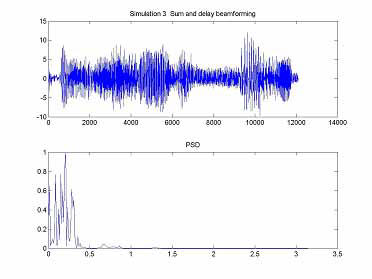[HOME] [EDUCATION] [PUBLICATIONS] [RESEARCH] [SOFTWARE] [PROJECTS]
SPECTRAL CLUSTERING AND KERNEL PCA ARE PURSUING GOOD PROJECTIONS [ report ]
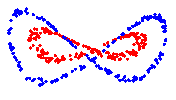 We interpret spectral clustering
algorithms in the light of unsupervised learning techniques like
principal component analysis and kernel principal component analysis.
We show both are equivalent up to a normalization of the do product or
the affinity matrix.
We interpret spectral clustering
algorithms in the light of unsupervised learning techniques like
principal component analysis and kernel principal component analysis.
We show both are equivalent up to a normalization of the do product or
the affinity matrix.
UNSUPERVISED LEARNING OF SEMANTIC CONCEPTS [ report ]
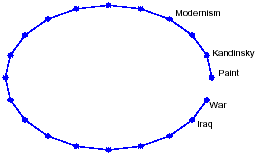
Given a large number of articles comprising of natural text we intend to train on the text and extract clusters of words which are semantically related. When we query the system with a word it will return all the words which are very related to the same theme. For example our training set could be all the articles appearing in a magazine. If I query the system with war it would return all the words like soldiers, aircrafts, Iraq etc. Note that all the words do not mean the same they are related by a common unifying theme of war. We want to apply the techniques of nonlinear manifold learning to this unsupervised learning task. We experimented with two techniques, a linear technique Principal Component Analysis and and non-linear manifold learning technique called Isomap.
CMSC733 COMPUTER VISION COURSE PROJECTS
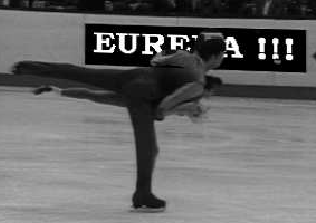
[ Image Mosiacing ]
[ Independent Motion Detection ]
FROM SHAPES TO SOUNDS [ report ]
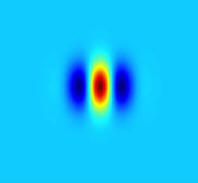 We
present a perceptually inspired mapping to convert a simple two
dimensional image consisting of simple geometrical shapes to a one
dimensional audio waveform consisting of simple harmonic complexes.
More specifically we map objects to harmonic complexes where the pitch,
timbre and location of the complex corresponds to the size, shape and
the position of the object respectively.
We
present a perceptually inspired mapping to convert a simple two
dimensional image consisting of simple geometrical shapes to a one
dimensional audio waveform consisting of simple harmonic complexes.
More specifically we map objects to harmonic complexes where the pitch,
timbre and location of the complex corresponds to the size, shape and
the position of the object respectively.
NONLINEAR MANIFOLD LEARNING [ report ] [ slides ]
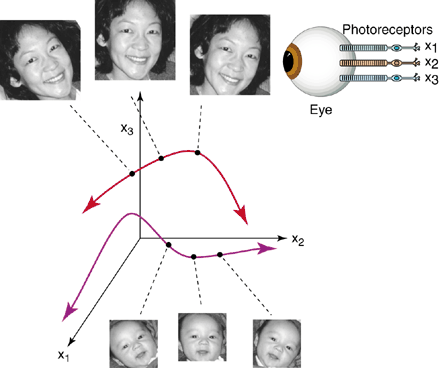
The aim of this report is to study the two nonlinear manifold learning techniques recently proposed [Isomap and Locally Linear Embedding (LLE)] and suggest directions for further research. First the Isomap and the LLE algorithm are discussed in detail. Some of the areas that need further work are pointed out. A few novel applications which could use these two algorithms have been discussed.
PDMA-MEMORY ANALYSIS TOOLKIT
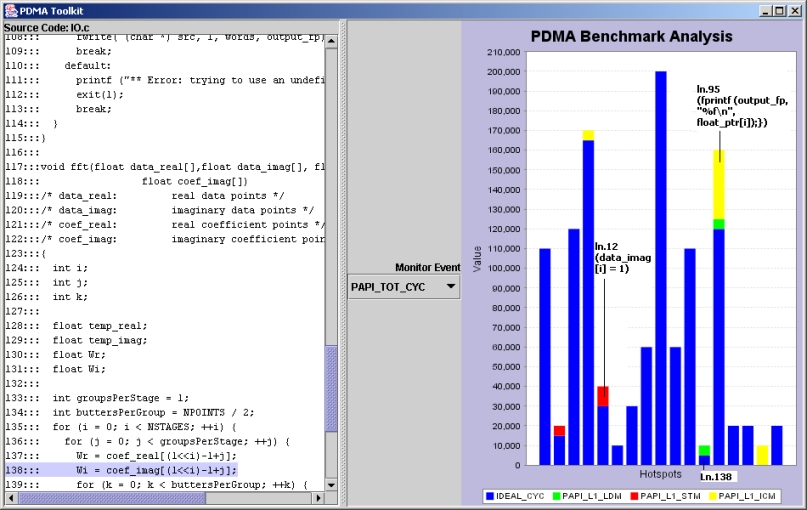
We developed a tool can be used to test programs for memory bottlenecks such as cache misses. The tool uses underlying hardware counters supported by existing machines to monitor memory-specific events and patches the runtime code of the program in order to monitor these events. The performance analysis results are displayed using histograms and stacked bar charts that are hyperlinked with the original source code. We use our tool to conduct tests on specific benchmarks such as Parkbench and FFT that successfully demonstrate its application utility.
FAST KERNEL PRINCIPAL COMPONENT ANALYSIS
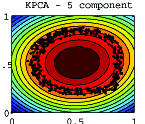
We explored Fast Multipole Method (FMM) like techniques to speeden up Kernel Principal Component Analysis for gaussian and polynomial kernels.
OPTIMISATION METHODS FOR SOUND SOURCE LOCALIZATION
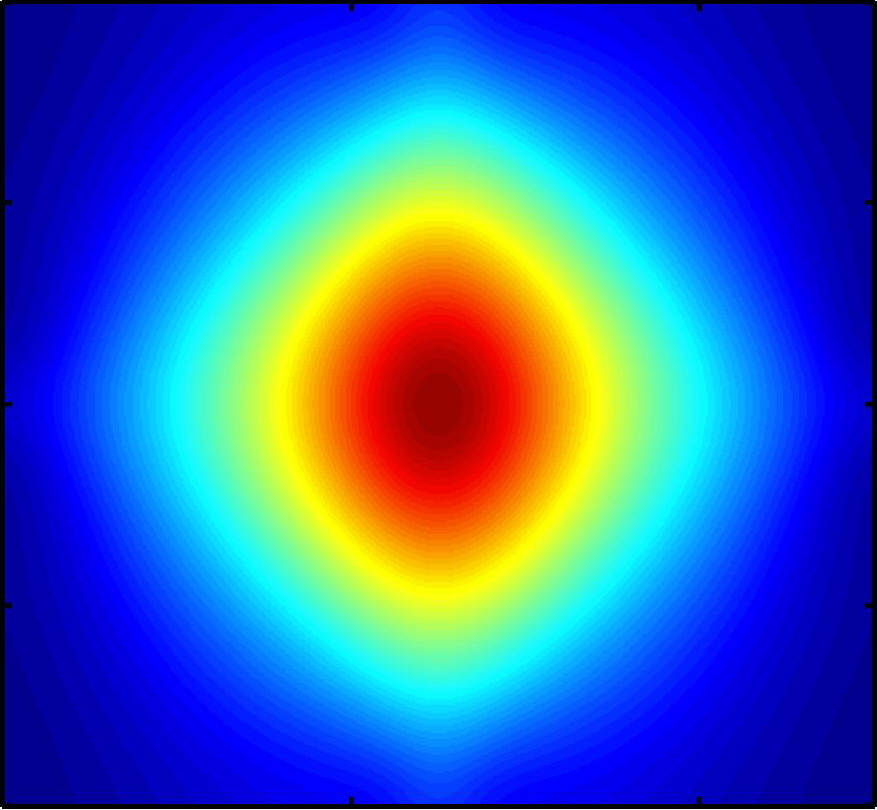
Sound source Localization can be formulated as a non linear least squares problem. In this project we evaluated different minimization methods including Nelder Mead simplex method, Quasi Netwton methods, Leveneberg Marquadrat algorithm and the Gauss Newton algorithm. Gauss Newton method was the best in terms of localization eroor and the number of iterations required.
 The
aim of our project was to detect and localize human faces in any given
grayscale image.
The
aim of our project was to detect and localize human faces in any given
grayscale image.  A Video Codec has
been implemented using transform coding for reduction of spatial
redundancy and unidirectional prediction to reduce
temporal redundancy. Coding decisions [I/P frame, Intra/Inter Macro
block] are adaptively made to ensure best tradeoff between quality and
compression. Shot segmentation is an important step in video content
analysis. The automatic partitioning of video into shots involves the
detection of transitions. Detecting transitions by extracting the DC
image in the compressed domain is advantageous. In this report we
extract the DC images from the compressed MPEG stream . We implement
the algorithms for cut and wipe detection . We also propose a new
algorithm for wipe detection.
A Video Codec has
been implemented using transform coding for reduction of spatial
redundancy and unidirectional prediction to reduce
temporal redundancy. Coding decisions [I/P frame, Intra/Inter Macro
block] are adaptively made to ensure best tradeoff between quality and
compression. Shot segmentation is an important step in video content
analysis. The automatic partitioning of video into shots involves the
detection of transitions. Detecting transitions by extracting the DC
image in the compressed domain is advantageous. In this report we
extract the DC images from the compressed MPEG stream . We implement
the algorithms for cut and wipe detection . We also propose a new
algorithm for wipe detection. The
aim of the project was to estimate the probability density function
(PDF) of any arbitrary distribution from a set of training samples. PDF
estimation was done using parametric (Maximum Likelihood estimation of
a Gaussian model), non-parametric (Histogram, Kernel based and
K-nearest neighbor) and semi-parametric methods (EM algorithm and
gradient based optimization). Application of EM algorithm for binary
sequence estimation has also been discussed.
The
aim of the project was to estimate the probability density function
(PDF) of any arbitrary distribution from a set of training samples. PDF
estimation was done using parametric (Maximum Likelihood estimation of
a Gaussian model), non-parametric (Histogram, Kernel based and
K-nearest neighbor) and semi-parametric methods (EM algorithm and
gradient based optimization). Application of EM algorithm for binary
sequence estimation has also been discussed.
